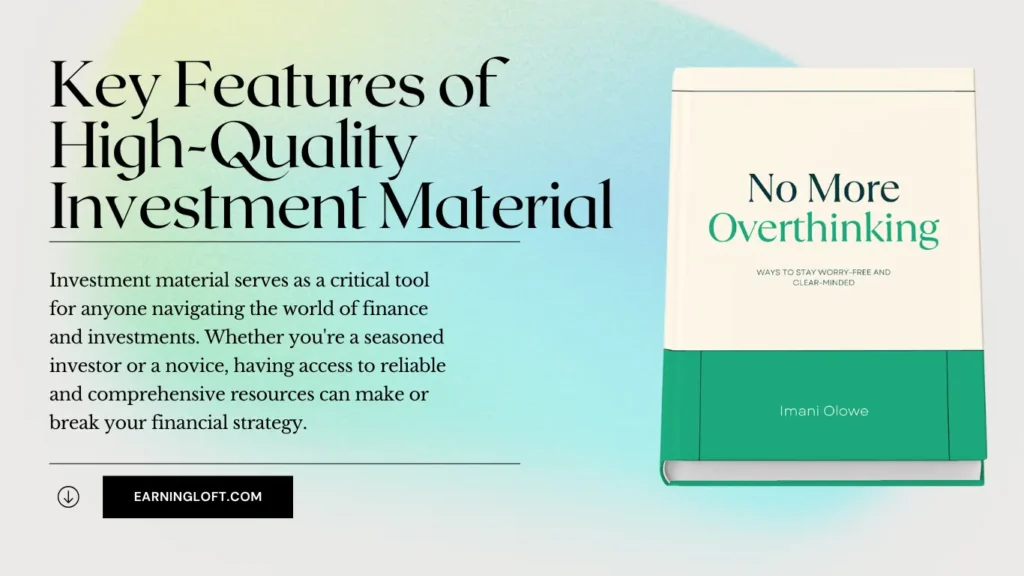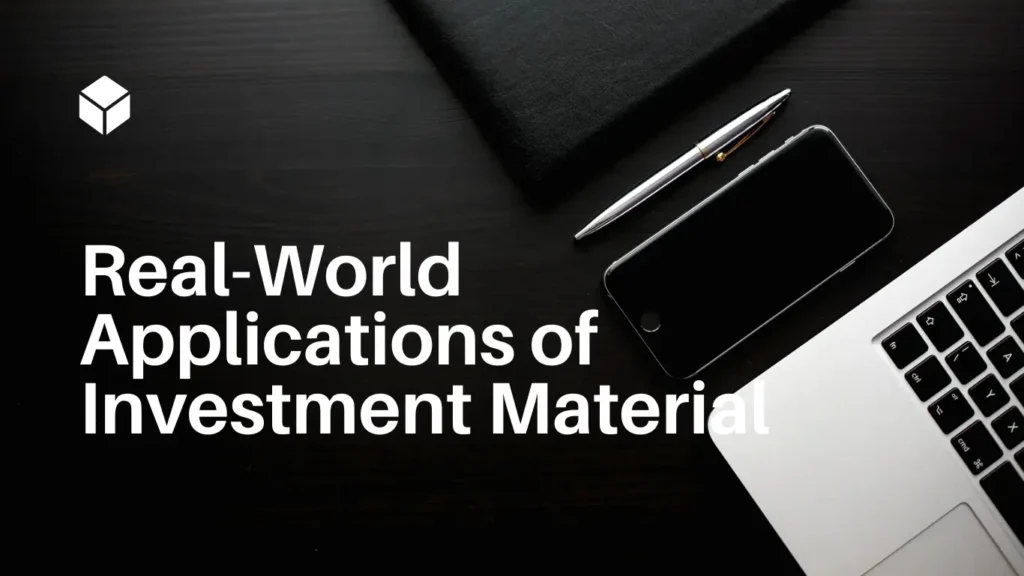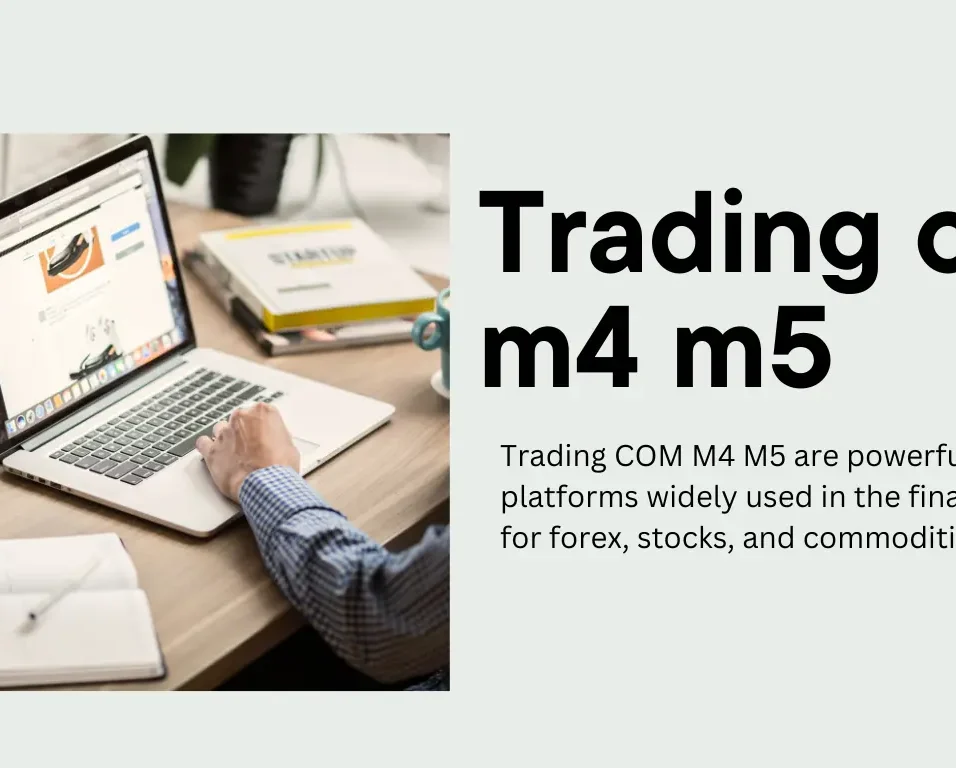Top Investment Materials to Maximize Your Wealth and Minimize Risks
Understanding Investment Material
Investment material serves as a critical tool for anyone navigating the world of finance and investments. Whether you’re a seasoned investor or a novice, having access to reliable and comprehensive resources can make or break your financial strategy. But what exactly constitutes investment material, and why is it indispensable? Let’s dive deeper to understand its features, benefits, and how to maximize its potential.
Key Features of High-Quality Investment Material

Investment material comes in many forms, including books, reports, digital tools, and financial analyses. However, the best resources share common characteristics that set them apart.
Accuracy and Reliability
The cornerstone of any good investment material is its accuracy. Reliable resources draw on verified data, providing a solid foundation for your financial decisions. For instance, reports based on government data or leading financial institutions’ insights tend to have higher credibility than generic content.
Comprehensive Coverage of Topics
High-quality investment material addresses diverse aspects of finance—from market trends and asset analysis to risk management strategies. This breadth ensures that investors have a holistic view, enabling them to make well-rounded decisions.
Accessibility and User-Friendliness
The most effective resources are easy to navigate and understand, even for those with minimal financial knowledge. User-friendly interfaces in digital tools or well-organized content in reports can significantly enhance the utility of investment material.
Benefits of Utilizing Investment Material

Accessing and using reliable investment material can provide a significant edge in financial planning and execution.
Enhanced Decision-Making
Well-researched resources empower investors to make informed decisions. They offer valuable insights into market conditions, potential risks, and opportunities, helping to minimize guesswork.
Time Efficiency for Investors
Instead of spending hours gathering information from scattered sources, investors can rely on curated material to save time. This efficiency is crucial, especially when dealing with fast-paced markets where timing can influence returns.
Mitigation of Investment Risks
By analyzing historical data, market trends, and expert opinions, investment material helps investors identify and manage risks. It provides a safety net by highlighting red flags and offering alternative strategies.
How to Choose the Best Investment Material
Selecting the right investment material can be overwhelming, given the plethora of options available. Here are some tips to streamline your choices.
Identify Your Specific Investment Goals
Are you saving for retirement, planning to buy real estate, or diversifying your portfolio? Different goals require different types of material. For example, real estate investors might benefit from market-specific analyses, while stock traders may prioritize real-time data.
Assess the Credibility of Sources
Always verify the source of the material. Reputable publishers, experienced financial advisors, or certified institutions are more likely to provide reliable and actionable insights.
Importance of Updated Information
Markets evolve rapidly, and outdated information can lead to poor decisions. Ensure that the resources you choose are current and reflect the latest trends and data.
The Role of Technology in Investment Material

Technology has revolutionized how we access and use investment material, making it more dynamic and efficient.
Digital Platforms and Tools
Platforms like Bloomberg, Morningstar, and other financial applications offer investors a wealth of information at their fingertips. These tools provide real-time updates, analytical tools, and user-friendly dashboards.
AI and Data Analytics in Investment Material
Artificial intelligence and machine learning have brought unprecedented accuracy to investment insights. Predictive analytics and automated data processing help investors uncover patterns and make data-driven decisions.
Common Pitfalls in Relying on Investment Material
While investment material is invaluable, overdependence or misuse can lead to errors. Here are some common mistakes to avoid.
Overreliance on Predictions
Market predictions, no matter how well-informed, are not guarantees. Blindly following forecasts without considering broader factors can lead to losses.
Ignoring Contextual Factors
Investment material should be used in conjunction with an understanding of the broader economic and personal context. Ignoring these can result in poorly aligned strategies.
Misinformation in Unsourced Content
Not all material is created equal. Be wary of content that lacks credible sources or appears overly promotional. Such resources can mislead and distort your investment plans.
Real-World Applications of Investment Material

Investment material isn’t just theoretical; it plays a practical role in various domains.
Use in Personal Finance
From budgeting apps to retirement calculators, individuals rely on investment material to plan their financial futures effectively.
Applications in Corporate Investment Strategies
Corporations use financial models, market analyses, and forecasting tools to strategize and optimize their investments.
Role in Government Financial Planning
Governments leverage comprehensive financial data and reports to allocate budgets, plan infrastructure projects, and manage national debt.
Conclusion
Investment material is a cornerstone of financial success, offering the insights and tools needed to navigate the complexities of modern finance. By focusing on reliable, comprehensive, and user-friendly resources, investors can make informed decisions that align with their goals. As technology continues to evolve, the accessibility and effectiveness of investment material are only set to improve.
FAQs
1. What are the types of investment material?
Investment material includes financial reports, market analyses, books, digital platforms, and online tools tailored to various investment needs.
2. How often should investment material be updated?
Ideally, investment material should be updated regularly—monthly or quarterly—to reflect current market trends and data.
3. Can technology fully replace traditional investment material?
While technology offers efficiency and real-time updates, traditional resources like books and expert opinions still provide deep, foundational knowledge.
4. What are the risks of not using reliable investment material?
Without reliable material, investors risk making uninformed decisions, potentially leading to significant financial losses.
5. Are there free resources available for high-quality investment material?
Yes, many credible websites, government publications, and financial institutions offer free reports, tools, and educational content.









Leave feedback about this